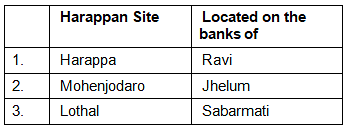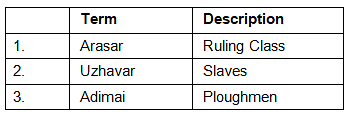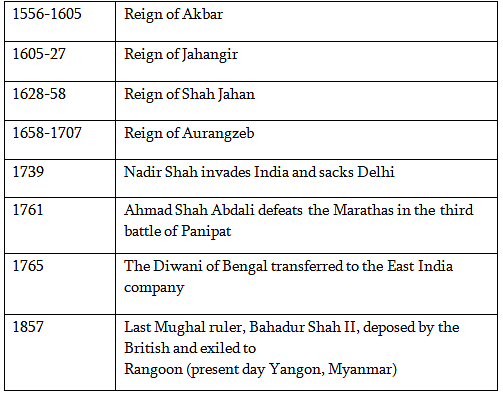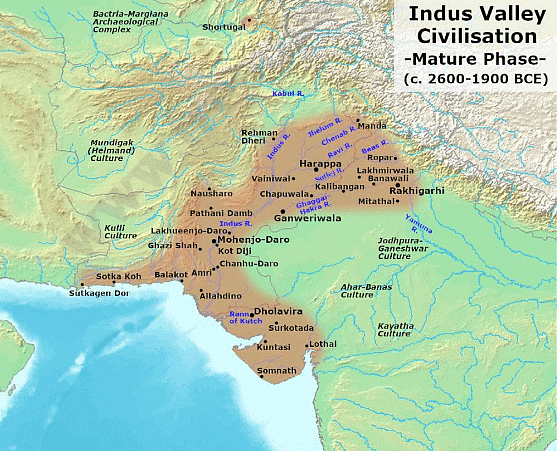Test: History - 7 - UPSC MCQ
30 Questions MCQ Test - Test: History - 7
Which of the following steps were taken by rulers in the medieval times to earn support of their subjects?
Declaring their close relationship with god through titles like “Shadow of God”.
Constructing public buildings like markets and water tanks.
Offering patronage to the learned and pious people.
Select the correct answer using the code given below.
Declaring their close relationship with god through titles like “Shadow of God”.
Constructing public buildings like markets and water tanks.
Offering patronage to the learned and pious people.
Consider the following statements:
Trabeate style of architecture was used in India for construction since Harappan civilization.
Limestone cement was a new technological development witnessed during the medieval Age.
Which of the statements given above is/are correct?
Trabeate style of architecture was used in India for construction since Harappan civilization.
Limestone cement was a new technological development witnessed during the medieval Age.
| 1 Crore+ students have signed up on EduRev. Have you? Download the App |
With reference to Pre-Mauryan Period, consider the following statements:
-
Village Headman was known as Gramini
-
Use of Iron began in India from the times of the Indus Valley Civilization.
Which of the statements given above is/are Correct?
Village Headman was known as Gramini
Use of Iron began in India from the times of the Indus Valley Civilization.
Consider the following statements regarding Pre-Historic India:
Stone tools were used for
Digging the ground to collect edible roots
Stitching clothes made out of animal skin
Making spears and arrows for hunting
Which of the statements given above is/are Correct?
Which of the following sites are identified as a Neolithic Sites?
Daojali Hading
Paiyampalli
Kurnool caves
Inamgaon
Select the correct answer using the code given Below.
With respect to women’s condition in Ancient India, consider the following statements:
There was no female Upanishadic thinker in Ancient India.
Women were not allowed to join Buddhist Sangha.
Which of the statements given above is/are Incorrect?
Arrange the following bhakti saints chronologically:
Narsi Mehta
Basavanna
Tulsidas
Manikkavasagar
Select the correct answer using the code given Below.
With reference to the Mahajanapadas, consider the following statements:
The tax was fixed at 1/6th of the produce.
The hunters and gatherers had to provide forest produce to the raja.
Which of the statements given above is/are Correct?
With reference to the Medieval Indian history, which one among the following events happened earliest?
Consider the following statements with regard to the Harappan script:
Harappan writing is found only on the Harappan seals.
Harappan script was Boustrophedon and non-alphabetical.
Which of the statements given above is/are Correct?
With reference to the Sufi movement, consider the following statements:
The khanqah was the centre of social life.
Chishtis practised austerity by maintaining a distance from worldly power.
Which of the statements given above is/are correct?
Consider the following statements regarding Ain-i-Akbari:
It was part of Akbanrnama commissioned by Akbar.
It gives detailed accounts of the organization of the court, administration and army.
Which of the statements given above is/are correct?
With regard to the Mehrgarh, consider the following statements:
It is located in the Belan Valley, Uttar Pradesh in northeastern India.
Remains of rectangular houses and several burial sites have been found here.
Which of the statements given above is/are correct?
Which of the following are the reasons behind the Magadha empire being such a power centre in ancient India?
Access to iron tools
Urbanization
Advancement in technology
Political marriages
Select the correct answer using the codes given Below:
Consider the following statements with regard to external trade in ancient India:
Puhar was a port city located on the Eastern coast of India.
Trade with Roman Empire included spices, medicinal plants and textiles.
Which of the statements given above is/are Correct?
Which one of the following statements is not correct about Lingayats?
Consider the following pairs:

Which of the pairs given above is/are correctly Matched?
Consider the following statements:
Mesopotamian texts refer to the Harappan region as Magan.
Harappan Civilization procured Copper from Oman region.
Harappans knew ship-building and communicated with different regions by Sea.
Which of the statements given above is/are Correct?
With reference to the ancient history of India, the term ‘theris’ refer to
Consider the following statements with regard to literary evidences of existence of ideas alternative to Brahmanical ideas mentioned in Dharmasutras or in Manusmriti:
Mrichchakatika, a play written by Shudraka, describes its protagonist as both a Brahmana and a merchant.
Matanga Jataka is a story of a Bodhisattva who is identified as an outcaste, Chandala.
Which of the statements given above is/are Correct?
Consider the following pairs of terms mentioned in the Sangam literature and their meanings:

Which of the pairs given above is/are correctly Matched?
Consider the following statements:
Taxation in the Doab
Introduction of token currency
Transfer of capital
Which among the following rulers introduced the administrative reforms mentioned above?
Which of the following statements is/are correct regarding the Vijayanagara Empire?
Vijayanagara rulers were follower of the god Virupaksha.
The empire was founded in the fourteenth century.
They did not use mortar or any other cementing agent for construction of fortification walls.
Select the answer using the code given below.
With reference to the administration of the Delhi sultanate, consider the following statements:
The territory was divided into Iqtas which were directly maintained by the Sultan.
The Iqta was initially transferable but was made hereditary during the reign of Firuz Tughlaq.
Which of the statements given above is/are Correct?
Consider the following statements regarding brahmanical theory:
Jati, like Varna was based on birth.
While there is a restriction on the number of varnas, there was no restriction on the number of jatis.
Which of the statements given above is/are Correct?
Consider the following statements regarding RBI Integrated Ombudsman Scheme:
It had been launched to improve the grievance redressal process of banking services.
The Scheme defines ‘deficiency in service’ as the ground for filing a complaint against the bank.
The processing centre for this scheme has been set up in Chandigarh.
Which of the statements given above is/are correct?
Consider the following pairs of places and their association with the life of Buddha:

Which of the pairs given above is/are correctly Matched?
Which of the following statements with regard to the practice of untouchability in the Ancient India is incorrect?
Consider the following statements with regard to Harappan civilization:
Grains found at Harappan sites include Wheat, barley, chickpea and lentil.
Domestication of animals like cattle, sheep, goat and buffalo was practiced.
Harappans ploughed and irrigated their agricultural fields.
Which of the statements given above is/are Correct?



















